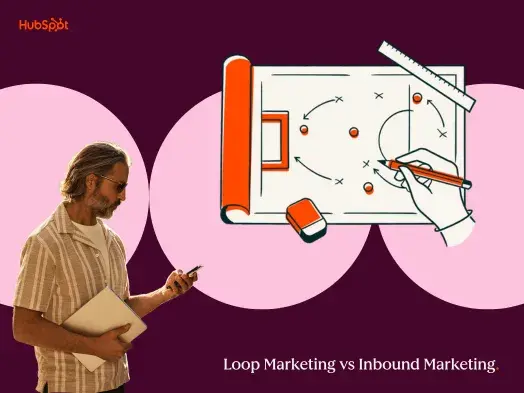By Sarah Threet, Marketing Consultant at Heinz Marketing
The Promise and the Blind Spot
AI is everywhere in B2B marketing and sales. It’s drafting content, analyzing intent signals, segmenting audiences, and even deciding who gets an SDR’s attention next. The results can be impressive: faster turnaround and more personalized outreach at scale.
But for every success story, there’s a growing list of examples where AI quietly goes off course. Misinterpreting data, fabricating facts, or producing “confidently wrong” insights that sound plausible but aren’t true.
The danger isn’t that AI makes mistakes. It’s that it makes them believable. And when those mistakes show up in a B2B context, whether in a report, a sales sequence, or a thought leadership piece, the fallout isn’t just a harmless typo; it’s damaged trust, wasted spend, and a credibility problem that’s hard to undo.

Why AI Goes Wrong in B2B Marketing and Sales
Most AI failures aren’t technical—they’re operational. They happen because teams treat AI like a finished product rather than a prediction engine. Here are the most common reasons AI goes wrong, and what they look like in practice:
Data That Isn’t Ready for Machines
AI assumes your data is clean, structured, and consistent. Most marketing and sales data isn’t. Duplicate records, inconsistent field names, export formats from survey tools or CRMs lead AI to read the data incorrectly and draw the wrong conclusions. When the dataset itself is messy, the model can’t distinguish signal from noise, and its output may sound authoritative even when it’s off by miles. And the scary thing is that it won’t regularly tell you that your data file was difficult to read. It won’t provide you the heads up that its analyzation may be off. It is up to you to review it thoroughly.
Prompts Without Context
Generative AI responds to clarity and specificity. When teams ask a model to “summarize results” or “analyze outreach performance,” it’s essentially guessing the logic behind your data. Without the guidance of what each column represents, what to ignore, or what matters most, the model will fill in gaps on its own. Sometimes that means inventing data that was never there.
The Illusion of Accuracy
AI doesn’t know when it’s wrong. It’s designed to produce fluent, confident text. So when an output sounds precise, with even percentages to the tenth decimal, detailed personas, or perfectly phrased recommendations, it seems trustworthy. But that fluency hides uncertainty. Many teams never question it until a human fact-checks and realizes the math doesn’t add up.
Overreliance on the Tool
The temptation to “let AI handle it” is strong, especially in resource-constrained teams. But models aren’t analysts. They can’t clean data, reconcile sources, or understand business nuance. When teams skip manual validation or strategic oversight, even small hallucinations can make it into final deliverables or outreach messages.
The Tone Trap
Perhaps the most overlooked failure isn’t factual, but tonal. Many marketers publish or send AI-generated copy without adapting it to their brand voice or audience. The result is over-polished, overconfident, vaguely “AI-sounding” writing that blends in with everything else on LinkedIn and email. The giveaway is easy to spot: too many em dashes, too many adjectives, and a rhythm that feels mechanical. It reads well but can connect poorly with a human audience. In B2B, that gap between “sounding good” and “feeling real” is where deals die.
Missing Governance and Guardrails
Without clear processes for review, validation, and accountability, AI’s mistakes become systemic. Who checks the data source? Who reviews the generated output before it’s sent or published? Without defined ownership, small inaccuracies can move quickly through an organization’s content, outreach, or analytics stack.
The Cost of Getting It Wrong
When AI misses the mark in B2B, the consequences are more than cosmetic:
- Brand credibility: Once clients or prospects spot inaccuracies, it’s hard to rebuild trust.
- Pipeline distortion: Misinterpreted data leads to the wrong segments, messages, or accounts getting prioritized.
- Buyer fatigue: Repetitive or obviously AI-generated outreach reduces engagement and response rates.
- Team complacency: The more teams rely on AI without verification, the more critical thinking and creativity erode.
Building a Smarter AI Workflow
CMOs, CSOs, and RevOps leaders don’t necessarily need to slow their AI adoption, but they do need to lead it differently. If you’re defining where AI fits into your 2026 roadmap, our Practical AI Playbook for 2026 Planning dives deeper into where to lean in and where to tread cautiously. Here are some practices that separate the teams who harness AI well from those who end up cleaning up after it:
Build Clean Inputs Before Smart Outputs
Treat data hygiene as part of your AI strategy. Ensure CRMs, spreadsheets, and enrichment sources follow consistent formats and validation rules before feeding them into any model. AI can’t make sense of a mess, and “garbage in, garbage out” has never been truer.
Design Prompts Like You Design Campaign Briefs
Give AI clear direction. Specify context, field definitions, success criteria, and the type of output you expect. Treat prompts as you would a creative brief to a junior strategist. If your prompts are vague, the work will be too.
Demand Transparency
Any AI process that can’t show its math is a red flag. Keep a traceable record of data sources, assumptions, and model outputs so that verification is possible. Request that any AI model also cite things specifically, including verifying what it is reading within a cell range.
Keep Humans in the Loop
AI should augment, not replace, analysis and communication. Require human review before external publication or outreach. Encourage team members to question accuracy and tone, not just format.
Edit for Human Voice
Every AI draft needs a human rewrite. Tighten tone, remove fillers, and replace “AI rhythm” with conversational clarity. If it doesn’t sound like how your company speaks to clients in real life, then it’s not ready.
Create Guardrails and Accountability
Decide what’s appropriate for AI assistance and what requires manual oversight. Document these rules across marketing, sales, and RevOps. AI isn’t a tool you “set and forget”; it’s a workflow you continually refine.
The Opportunity Ahead
AI has enormous potential in B2B. Used correctly, it can speed up operations, sharpen insights, and scale personalization. But that only happens when humans stay in the loop.
The winning teams in 2026 won’t be those that automate the fastest. They’ll be the ones that stay accurate, authentic, and accountable. And as marketing leaders prepare budgets and plans, it’s equally critical to connect AI investment to measurable outcomes. Here’s how CMOs can speak the CFO’s language with data-driven forecasting.
AI can help you move faster, but first, make sure it’s pointing in the right direction. Ensure that your voice, not the model’s, is the one your buyers hear. For more information on how to use incorporate AI and automation into your sales and marketing orchestration and campaigns, send us an email.
The post When AI Goes Wrong in B2B Marketing and Sales Outreach appeared first on Heinz Marketing.



